|
Books Should Be Free Loyal Books Free Public Domain Audiobooks & eBook Downloads |
|
|
Books Should Be Free Loyal Books Free Public Domain Audiobooks & eBook Downloads |
|
Fiction |
|---|
|
Book type:
Sort by:
View by:
|
By: James Driscoll | |
|---|---|
 The Brighton Boys in the Radio Service
The Brighton Boys in the Radio Service
The Brighton Boys in the Radio Service is a boys adventure story set in WWI – Three College Chums join the military and face the perils of spies, submarines and enemy soldiers in the trenches of embattled Europe. An engaging story set in a period where good guys wore white hats, bad guys wore black hats and every chapter ends with a cliffhanger so you have to come back for more! | |
By: James Elroy Flecker (1884-1915) | |
|---|---|
 King of Alsander (Dramatic Reading)
King of Alsander (Dramatic Reading)
First published in 1914, the King of Alsander is the only novel by James Elroy Flecker, best known as a poet, but also a noted scholar, linguist and diplomat. Flecker's love of learning, language and travel, and his keen satirical insight into politics are all in evidence in this phantasmagoric tale. As the author himself describes it: Here is a tale all romance - a tale such as only a Poet can write for you, O appreciative and generous Public - a tale of madmen, kings, scholars, grocers, consuls,... | |
By: James Fenimore Cooper (1789-1851) | |
|---|---|
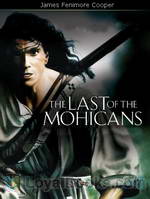 The Last Of The Mohicans
The Last Of The Mohicans
The Last of the Mohicans is an epic novel by James Fenimore Cooper, first published in January 1826. It was one of the most popular English-language novels of its time, and helped establish Cooper as one of the first world-famous American writers.The story takes place in 1757 during the French and Indian War, when France and Great Britain battled for control of the American and Canadian colonies. During this war, the French often allied themselves with Native American tribes in order to gain an advantage over the British, with unpredictable and often tragic results. | |
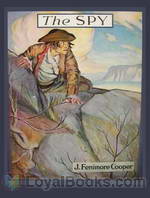 The Spy
The Spy
Between 1865-73 the tumultuous American Revolution rages on in different battlefields. The air is thick with hatred and suspicion as the Continental and British armies clash in bloody warfare. In Westchester County, New York, an area is considered a neutral ground for both forces, Harvey Birch plies his dangerous mission. An innocuous peddler by day, he is in fact an American spy, though he does nothing to correct anyone who assumes he is a British spy. In a magnificent country mansion, The Locusts, live the wealthy Whartons... | |
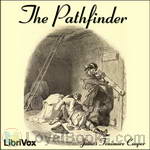 The Pathfinder
The Pathfinder
Natty Bumppo goes by many names: La Longue Carabine, Hawk Eye, Leatherstocking, and in this tale, The Pathfinder. Guide, scout, hunter, and when put to it, soldier, he also fills a lot of roles in pre-Revolution upstate New York. An old friend, Sergeant Dunham of the 55th Regiment of Foot, asks him to guide his daughter through the wilderness to the fort at Oswego where Dunham serves. With the French engaging native Indian allies against the British and the Yankee colonists, such a journey is far from safe... | |
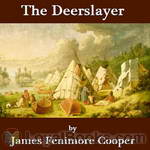 The Deerslayer
The Deerslayer
The Deerslayer, or The First Warpath (1841) was the last of James Fenimore Cooper’s Leatherstocking tales to be written. Its 1740-1745 time period makes it the first installment chronologically and in the lifetime of the hero of the Leatherstocking tales, Natty Bumppo. | |
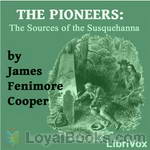 The Pioneers
The Pioneers
The Pioneers: The Sources of the Susquehanna; a Descriptive Tale is one of the Leatherstocking Tales, a series of five novels by American writer James Fenimore Cooper. The Pioneers was first of these books to be published (1823), but the period of time covered by the book (principally 1793) makes it the fourth chronologically. (The others are The Deerslayer, The Last of the Mohicans, The Pathfinder, and The Prairie.)The story takes place on the rapidly advancing frontier of New York State and features... | |
 Prairie - A Tale
Prairie - A Tale
The story opens with Ishmael, his family, Ellen and Abiram slowly making their way across the virgin prairies of the Midwest looking for a homestead, just two years after the Louisiana Purchase, and during the time of the Lewis and Clark Expedition. They meet the trapper (Natty Bumppo), who has left his home in New York state to find a place where he cannot hear the sound of people cutting down the forests. In the years between his other adventures and this novel, he tells us only that he has walked all the way to the Pacific Ocean and seen all the land between the coasts (a heroic feat, considering Lewis and Clark hadn’t yet completed the same trek). | |
By: James Hay (1881-1936) | |
|---|---|
 No Clue! A Mystery Story
No Clue! A Mystery Story
“No Clue! A Mystery Story” finds detective Jefferson Hastings at the home of wealthy but eccentric Arthur Sloane one hot summer night, when two other guests at Sloanehurst stumble across the body of young Mildred Brace lying dead on the lawn. Sloane’s daughter Lucille asks Hastings to help solve the crime, but Hastings gets surprisingly little help from anybody he interviews, including Mr. Sloane himself and even the mother of the victim. With few clues to aid him and nobody beyond suspicion,... | |
By: James Joyce (1882-1941) | |
|---|---|
 Ulysses
Ulysses
Banned in the United States and United Kingdom throughout the 1920s, Ulysses turned conventional ideas of the novel inside out with its bold new form, style and theme. Deeply rooted in the Greek myth of the hero of the Trojan War, Joyce bases his novel on Ulysses or Odysseus, who is doomed to voyage for ten years before returning home to Ithaca. Joyce had been deeply influenced by the Iliad and the Odyssey, which he had read from Charles Lamb's adaptations as a child. In fact, he considered him the epitome of the heroic ideal and constantly thought of giving the myth a new dimension in modern literature... | |
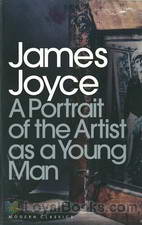 A Portrait of the Artist as a Young Man
A Portrait of the Artist as a Young Man
His family name is derived from a Greek craftsman who created the Labyrinth and designed wings for himself and his son to fly away from the island they were imprisoned in. But Stephen Dedalus, the young hero of James Joyce's first novel, is a young man who rises above his baser instincts and seeks a life devoted to the arts. This quintessential coming of age novel describes the early life of Stephen Dedalus. It is set in Ireland during the nineteenth century which was a time of emerging Irish nationalism and conservative Catholicism... | |
 Ulysses (version 2)
Ulysses (version 2)
Ulysses is a groundbreaking novel in which Irish author James Joyce explores realism through stream-of-consciousness technique and shifting narrative styles. It was published in serial form between 1918-1920 and first published in book form in 1922. The story follows Leopold Bloom through Dublin during the course of one day: June 16, 1904. The events and characters of Ulysses parallel those of Homer's Odyssey, with Bloom corresponding to Odysseus. Although the book was the subject of early obscenity... | |
By: James Lane Allen (1849-1925) | |
|---|---|
 White Cowl
White Cowl
A Trappist monastery in nineteenth century Kentucky. A young monk. A young woman in distress. Whither? One might want to compare this story with a later story with a similar theme, more fully developed, by the same author. | |
By: James Oliver Curwood | |
|---|---|
 The Alaskan
The Alaskan
This story opens with a young woman who voyages alone into the wilds of Alaska to escape her tragic past. It then continues on to a young man who passionately protects the pristine environment, people and way of life in this snowbound country. Finally, a greedy profiteer arrives in the narrative whose only aim is to fill his pockets. When these three characters encounter each other on the stark and snowy plains, it's a clash of ideals and the sparks begin to fly. The Alaskan by James Oliver Curwood is one of his very engaging adventure romance conservationist stories and was an instant bestseller, like most of his books, when it was first published in 1923... | |
 The Flaming Forest
The Flaming Forest
A tale of mystery, romance, and honor, as David Carrigan must choose between his duty as an officer of the law and a girl who holds him captive; a girl who Carrigan thinks he may have fallen in love with no less! Who is this strange girl Jean-Marie, and why won’t she give him his freedom? And who are the people that she surrounds herself with along the great Canadian rivers and wilderness barrens and forests of the northwest? | |
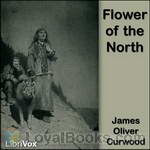 Flower of the North
Flower of the North
Flower of the North finds Philip Whittemore on an adventure which takes him up the Churchill River of northern Canada to a land which he thought he knew. However, tucked in among the rocks and hills lies an unfamiliar outpost which he’s been told is called Fort o’ God whose inhabitants and history are shrouded in mystery. It is Jeanne D’Arcambal and her protector Pierre who have told him of this place, but there is so much which they haven’t told him, including who they really are, where they come from, and their clouded past. | |
 God's Country—And the Woman
God's Country—And the Woman
James Curwood wrote many adventures of the far north. By 1909 he had saved enough money to travel to the Canadian northwest, a trip that provided the inspiration for his wilderness adventure stories. The success of his novels afforded him the opportunity to return to the Yukon and Alaska for several months each year that allowed him to write more than thirty such books. The Canadian North is often referred to as “God’s Country” God’s Country is a tale of adventure, mystery and romance! | |
 The Country Beyond
The Country Beyond
The Country Beyond, subtitled A Romance In the Wilderness, is a story of “Jolly” Roger McKay, an outcast on the run from the law; Nada, the girl he falls in love with; and Peter, the devoted mixed-breed dog who links the two together as no human could, as action, adventure, and romance take them through the Northwest Canadian wilderness in search of The Country Beyond. (Summary by Roger Melin) | |
 The Valley of Silent Men
The Valley of Silent Men
Subtitled: A Story of the Three River Country. James Kent has learned that he is terminally ill with perhaps only days to live, and so decides to confess to a murder and thus save an innocent man. Nobody believes his confession, particularly Marette, a mysterious girl who had shown up at Athabasca Landing only weeks before. Kent’s illness takes a turn and his death is postponed, and he sets about to find out more about the girl, who he ends up falling in love with, although she’ll not reveal her past to him, nor what she knows about the murder... | |
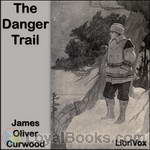 The Danger Trail
The Danger Trail
Chicago engineer Jack Howland is sent to the edge of the Canadian barren lands north of Prince Albert to establish a train route through some of the most treacherous terrain in North America. He would soon learn that it was not only the terrain that was forbidding, as he begins to understand why the previous engineers sent on the same mission had been forced to give up the task and flee back to the south. Mysterious visitors, suspicious characters, strange apparent coincidences, and one particularly mysterious girl meet Howland at every turn in this suspenseful tale of adventure, excitement, danger, and romance set in the northern Canadian wilderness. | |
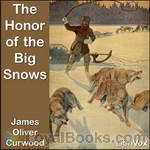 The Honor of the Big Snows
The Honor of the Big Snows
What unseen force may have brought young Jan Thoreau and his music from out of the barren lands into the remote camp of Lac Bain, forever changing the lives of those few who lived there? What brought him to the home of John and Melisse Cummins as the latter lay on her death bed? Moreover, what was the great sorrow and overpowering sadness which permeated the life of the young man in the months and years following his arrival, and by what means was he to struggle with The Honor of the Big Snows? | |
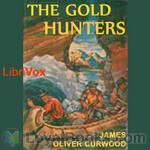 The Gold Hunters
The Gold Hunters
In The Gold Hunters we find 3 men in search of a treasure of gold hidden away in the upper reaches of the Canadian wilderness. One, a young white man, another his half breed friend, and the third the wise old Indian sage who communes with the wilderness as only his people have done through the generations. The 3 men know the gold is there, they had found the map which is leading them to it. Yet it seems that the map is leading them to places that don't exist, and each day finds a new adventure and new dangers which they must overcome if they are to achieve their reward. (Introduction by Roger Melin) | |
 The Golden Snare
The Golden Snare
With but two years of service in the RNMP Philip Raine finds himself somewhat unwillingly on the trail of Bram Johnson, wanted for murder and a wild, untamed and savage man who commands a pack of wolves as his brethren.But most peculiar of all is the snare which Bram had had in his posession and had somehow lost. It was a golden snare intricately woven out of the finest, most delicate flaxen hair of a woman. But what could possibly be the relationship between this half-human murderer and a woman... | |
 The Wolf Hunters
The Wolf Hunters
Follow Roderick and his friends Wabi and Mukoki on their adventures in the pristine North. They fight voracious wolves, hostile natives, and the vicious elements of nature, while on the hunt. Getting more than they bargained for, they discover a mysterious cabin, and stumble upon a secret that has lain hidden for half a century. Full of twists and turns, danger and suspense, The Wolf Hunters, the prequal to The Gold Hunters, is an excellent read. (Introduction by Brian Adey) | |
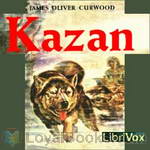 Kazan
Kazan
Kazan (sometimes published with the subtitle The Wolf Dog) is a once very popular novel by environmentalist and author James Oliver Curwood. After a trip to the Yukon area of Canada and Alaska, Curwood wrote a series of wilderness adventure novels that were best-sellers in the 1910’s and 1920’s and remained popular through mid century. Jack London had begun the vogue for northland dog stories with his Call of the Wild and White Fang, and there were many imitators, but none had a greater impact than Curwood... | |
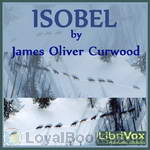 Isobel
Isobel
Action, intrigue, and a touch of romance in the farthest reaches of northern Canada. Sergeant Billy MacVeigh of the Canadian Northwest Mounted, with his only partner Pelliter are the only official representatives in the lonely and desolate reaches of Point Fullerton, hundreds of miles from the next nearest outpost, and from any civilization. Both are nearing the end of their service in those regions, and their main function has been to try to find the elusive murderer Scottie Deane, and if they happen upon anybody trading in Eskimo women to haul them in also... | |
 Courage of Marge O'Doone
Courage of Marge O'Doone
David Raine is travelling, trying to escape his own memories. On the train he meets Father Rolland, who invites him North, to a world of "mystery and savage glory", to help him find himself again. On the same train, he meets a mysterious woman searching for a man named Michael O'Doone. When she's gone, he finds a thin package on her seat. It contains the photograph of a girl and David makes it his aim to find her, while following Father Rolland into the mysterious North. | |
By: James Otis (1848-1912) | |
|---|---|
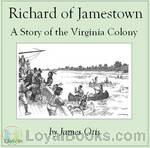 Richard of Jamestown: A Story of the Virginia Colony
Richard of Jamestown: A Story of the Virginia Colony
Richard of Jamestown by James Otis was written for children with the purpose to show them the daily home life of the Virginia colonists. It is written from the viewpoint of a young boy named Richard Mutton. | |
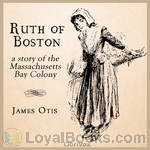 Ruth of Boston: A Story of the Massachusetts Bay Colony
Ruth of Boston: A Story of the Massachusetts Bay Colony
James Otis wrote a series of books depicting life in the new colonies, written from a child’s point of view. Ruth of Boston is the story of 12 year old Ruth, coming from London to live in the Massachusetts Bay Colony. It gives accounts of what a girl’s daily life might have been like during the beginnings of this colony. | |
 Toby Tyler or Ten Weeks with a Circus
Toby Tyler or Ten Weeks with a Circus
Toby Tyler tells the story of a ten year-old orphan who runs away from a foster home to join the traveling circus only to discover his new employer is a cruel taskmaster. The difference between the romance of the circus from the outside and the reality as seen from the inside is graphically depicted. Toby's friend, Mr. Stubbs the chimpanzee, reinforces the consequences of what happens when one follows one's natural instincts rather than one's intellect and conscience, a central theme of the novel. | |
By: James Schmitz (1911-1981) | |
|---|---|
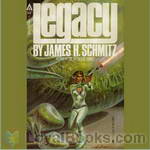 Legacy
Legacy
Ancient living machines that after millennia of stillness suddenly begin to move under their own power, for reasons that remain a mystery to men. Holati Tate discovered them—then disappeared. Trigger Argee was his closest associate—she means to find him. She's brilliant, beautiful, and skilled in every known martial art. She's worth plenty—dead or alive—to more than one faction in this obscure battle. And she's beginning to have a chilling notion that the long-vanished Masters of the Old Galaxy were wise when they exiled the plasmoids to the most distant and isolated world they knew.... | |
By: James Stephens | |
|---|---|
 There is a Tavern in the Town
There is a Tavern in the Town
The soul of Irish wit is captured in this unique tale of a barstool philosopher, the concluding story from 'Here Are Ladies' by James Stephens. (Introduction by iremonger) | |
By: James Thomson (1834-1882) | |
|---|---|
 Satires and Profanities
Satires and Profanities
"Believing as I do that James Thomson is, since Shelley, the most brilliant genius who has wielded a pen in the service of Freethought, I take a natural pride and pleasure in rescuing the following articles from burial in the great mausoleum of the periodical press. There will doubtless be a diversity of opinion as to their value. One critic, for instance, has called “The Story of a Famous Old Jewish Firm” a witless squib; but, on the other hand, the late Professor Clifford considered it a piece of exquisite mordant satire worthy of Swift... | |
 City of Dreadful Night and Other Poems
City of Dreadful Night and Other Poems
While primarily known for being pessimistic, the poetry of James Thomson is also beautiful and psychologically complex. This 1903 edition, varying as it does in selection from the edition of the same name published during his lifetime, provides a representative look at what has come to be known as his best works. The title poem is a horror-laced journey through depths that are surface level supernatural and at their heart an exploration of depression and atheist existential crisis. Subsequent works turn personal struggles into pure art and praise poets that have gone before. - Summary by MoonLylith | |
By: James Weldon Johnson (1871-1938) | |
|---|---|
 Autobiography of an Ex-Colored Man
Autobiography of an Ex-Colored Man
Johnson's only novel, The Autobiography of an Ex-Colored Man, was originally published anonymously in 1912. It is a fictional novel written as a memoir of an unnamed biracial narrator who grew up in the South during the Reconstruction and post-Reconstruction eras. It is a story in which the narrator relates how as a young boy he initially assumed that he was white, and how his notions of racial identity were suddenly turned upside down one day—how from that moment on he was inclined to view himself and the world about him from the perspective of blackness. The novel received very little notoriety until Johnson republished it in 1927, this time taking full credit as its author. | |
By: James Whitcomb Riley (1849-1916) | |
|---|---|
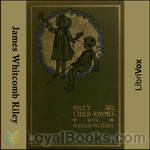 Selected Riley Child-Rhymes
Selected Riley Child-Rhymes
Riley was an American writer known as the “Hoosier poet”, and made a start writing newspaper verse in Hoosier dialect for the Indianapolis Journal in 1875. His favorite authors were Burns and Dickens. This collection of poems is a romanticized and mostly boy-centered paean to a 19th century rural American owning-class childhood. I’ve included the pieces I did because they’re the ones I most enjoyed when I read a copy of the collection handed down from my great-grandfather. | |
By: Jane Austen (1775-1817) | |
|---|---|
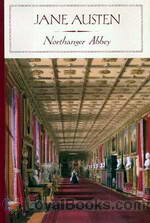 Northanger Abbey
Northanger Abbey
Jane Austen’s Northanger Abbey is a book about the life of Catherine Morland and her romantic relationships. The novel is divided into two parts; the first part begins with Catherine’s visit to Bath and her relationship with Henry Tilney and the other people she met there, and the second part starts with the arrival of Frederick Tilney and her visit to Northanger Abbey. This book alongside Pride and Prejudice and Sense and Sensibility is considered one of the major works of Jane Austen. The novel had undergone many revisions before its publication and it was even originally titled “Catherine... | |
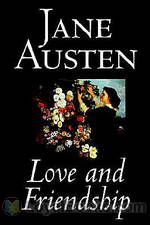 Love and Friendship
Love and Friendship
Begun when she was just eleven years old, Love and Friendship is one of Jane Austen's stories that very few readers may have encountered before. Austen experts feel that this story was written, like many others, only for the pleasure of her family and friends. It is scribbled across three notebooks, in childish handwriting, and the complete work is thought to have been written over a period of six or seven years. It is dedicated to one of her cousins, whom she was very close to, Eliza de Feuillide... | |
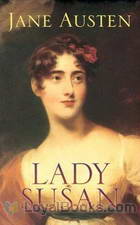 Lady Susan
Lady Susan
An epistolary novel, Lady Susan is an early work by Austen that was posthumously published in 1871. The short novel focuses on the self-serving eponymous anti-heroine, as she cunningly maneuvers her way through society in search of a wealthy husband for both her daughter and herself. Disregarding anything but her own selfish goals, Susan employs her charms to lure men and draw them into her web of deceit, no matter their age or status. Exploring issues including morals, manners, self-indulgence, malevolence, and social machinations, the relatively short novel is sure to fascinate with its atypical form... | |
 The Watsons
The Watsons
This fragment of a novel was written by Jane Austen in 1804 and remained untitled and unpublished until her nephew James Edward Austen-Leigh printed it in his A Memoir of Jane Austen in 1871. The title is from him. Mr Watson is a widowed clergyman with two sons and four daughters. The youngest daughter, Emma, has been brought up by a wealthy aunt and is consequently better educated and more refined than her sisters. But when her aunt contracts a foolish second marriage, Emma is obliged to return to her father’s house. There she is chagrined by the crude and reckless husband-hunting of two of her twenty-something sisters. | |
 Jane Austen's Juvenilia
Jane Austen's Juvenilia
Before becoming the author of such classics as Sense and Sensibility, Pride and Prejudice, and Emma, Jane Austen experimented with various writing styles as a teenager in the early 1790s. This is a collection of her juvenilia, including the epistolary novels Love and Freindship, Lesley Castle, and Lady Susan, as well as her comic History of England and some shorter pieces. (Summary by Elizabeth Klett) | |
 Love and Freindship, and Other Early Works
Love and Freindship, and Other Early Works
This book draws together some of Jane Austen's earliest literary efforts. It includes "Love & Freindship" and "Lesley Castle" both told through the medium of letters written by the characters. It also contains her wonderful "History of England" and a "Collection of Letters" and lastly a chapter containing "Scraps". In these offerings, we may see the beginnings of Miss Austen's literary style. We may also discern traces of characters that we encounter in her later works. G. K. Chesterton in his preface, for example, says of a passage in Love and Freindship; "... | |
By: Jane Barlow (1857-1917) | |
|---|---|
 Strangers at Lisconnel
Strangers at Lisconnel
Strangers at Lisconnel is a sequel to Jane Barlow’s Irish Idylls. The locations and most of the characters are common to both. There is great humor and concomitantly a certain melancholy in most of these stories of the most rural of rural places in Ireland. Although of a higher social class than her characters, Our Jane seems to have a touch of softness in her heart for their utter simplicity, abject poverty and naiveté. From the following brief example of dialogue, can be seen that Ms Barlow could only have come to write these words after having heard them countless times in person: Mrs... | |
 Irish Idylls
Irish Idylls
Irish Idylls is a collection of short stories about Irish peasantry during the 19th Century. Ms Jane Barlow, an Irish lass, having, unbelievably, an uncertain date of birth, has a turn of phrase that delights and simultaneously enmeshes the reader/listener with compassion for her tableau. She captures the tune and lilt of dialogue so delightfully. A tiny sample: "So, by hook or by crook, Lisconnel holds together from year to year, with no particular prospect of changes; though it would be safe enough to prophesy that should any occur, they will tend towards the falling in of derelict roofs, and the growth of weeds round deserted hearthstones and crumbling walls... | |
By: Jane C. Loudon (1807-1858) | |
|---|---|
 Mummy! A Tale of the Twenty-Second Century
Mummy! A Tale of the Twenty-Second Century
The Mummy!: Or a Tale of the Twenty-Second Century is about a wise Egyptian mummy who is reanimated far in the future. With a different take on what lies ahead for civilization inspired from the exciting developments of the era, it is a strange, entertaining story and an early science fiction work by a woman novelist. | |
By: Jane D. Abbott (1881-1968) | |
|---|---|
 Highacres (Dramatic Reading)
Highacres (Dramatic Reading)
The story of a young mountain girl and her first year of city living and going to a high school. She knows nothing of town life, but she had dreams and longs to learn more and discover what the world is like outside of her mountain home. Go with her to the Westley's home, where she finds everyone kind, except the Wesley's oldest daughter, Isobel, who is proud and snubs her. With determination, and courage she enjoys her first year, and longs to continue at Highacres. | |
By: Jane Porter (1776-1850) | |
|---|---|
 The Scottish Chiefs
The Scottish Chiefs
An adventure novel about William Wallace, one of the most popular books ever written by Jane Porter. The French version was even banned by Napoleon, and the book has remained very popular with Scottish children, but is equally enjoyable for adults. | |
By: Jaques Futrelle (1875-1912) | |
|---|---|
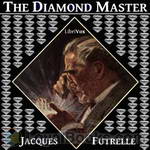 The Diamond Master
The Diamond Master
A perfect diamond worth millions is mailed, in a plain package, to a diamond dealer. Then he finds that identical diamonds were delivered to other diamond dealers. Where did the gems come from? Who sent them? And why? (Introduction by Dawn) | |
By: Jean de La Fontaine (1621-1695) | |
|---|---|
 Fables in Rhyme for Little Folks
Fables in Rhyme for Little Folks
Several of La Fontaine’s fables, translated into English by W. T. Larned. | |
By: Jean Ingelow (1820-1897) | |
|---|---|
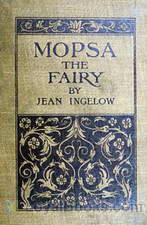 Mopsa the Fairy
Mopsa the Fairy
Jean Ingelow (1820 – 1897) was one of the more famous poets of the period, indeed many people suggested that she should succeed Alfred, Lord Tennyson as the first female Poet Laureate when he died in 1892. Mopsa the Fairy, written in 1869 is one of her more enduring stories. It is a delightful fantasy about a young boy who discovers a nest of young fairies and tells of their adventures together. | |
By: Jean M. Thompson (1865-?) | |
|---|---|
 Three Bears of Porcupine Ridge
Three Bears of Porcupine Ridge
Twenty-four delightful tales for children. Meet Timothy Mouse, Little Red Doe, Dame Woodchuck, King Moose and Unk-Wunk the Porcupine with their friends. Adventure and humor are skillfully wrapped around these lovable characters. | |
By: Jean Webster (1867-1916) | |
|---|---|
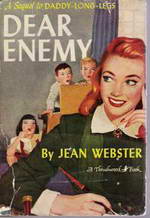 Dear Enemy
Dear Enemy
Dear Enemy is the sequel to Jean Webster’s novel Daddy-Long-Legs. The story as presented in a series of letters written by Sallie McBride, Judy Abbott’s college mate in Daddy-Long-Legs. Among the recipients of the letters are the president of the orphanage where Sallie is filling in until a new director can be installed, his wife (Judy Abbott of Daddy-Long-Legs), and the orphanage’s doctor (to whom Sallie addresses her letters: “Dear Enemy”). | |
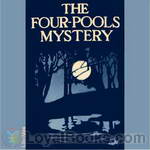 The Four-Pools Mystery
The Four-Pools Mystery
In The Four Pools Mystery the tyrannical plantation owner is deemed responsible for his own murder because of his mistreatment of the former slaves who continued in his employment after the war. Jean Webster (pseudonym for Alice Jane Chandler Webster) was born July 24, 1876 and died June 11, 1916. She was an American writer and author of many books including Daddy-Long-Legs and Dear Enemy. (Wiki) | |
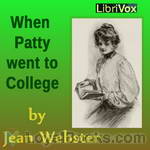 When Patty Went to College
When Patty Went to College
When Patty Went to College is Jean Webster's first novel, published in 1903. It is a humorous look at life in an all-girls college at the turn of the 20th century. Patty Wyatt, the protagonist of this story is a bright, fun loving, imperturbable girl who does not like to conform. The book describes her many escapades on campus during her senior year at college. Patty enjoys life on campus and uses her energies in playing pranks and for the entertainment of herself and her friends. An intelligent girl, she uses creative methods to study only as much as she feels necessary... | |
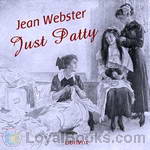 Just Patty
Just Patty
Patty, Conny, and Priscilla are the best of friends, and roommates at boarding school. While the teachers might say they are mischievous, even troublemakers, Patty and her friends act only in accordance with their convictions. From forming a labor union to furnishing a house for the neighbors, Patty's ideas are unconventional, yet loads of fun. Just Patty is the prequel to When Patty Went to College, the first novel by the author of Daddy-Long-Legs and Dear Enemy. | |
 Jerry
Jerry
Jerry is the humorous story of a young man's attempt to win his lady. Jerry is waiting for his friends at a hotel in Italy, and is bored and lonely. When he hears that a beautiful American lady, Constance Wilder, is staying nearby, he tries to visit her. After an awkward first meeting, he tries to catch her attention by pretending to be a peasant tour guide. She recognizes him for what he is, but pretends not to, and a lively charade is carried on as they tease and fall in love. A clean, sweet, funny historical fiction/romance. | |
By: Jean-Jacques Rousseau (1712-1778) | |
|---|---|
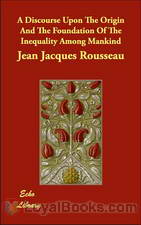 A Discourse Upon the Origin and the Foundation of the Inequality Among Mankind
A Discourse Upon the Origin and the Foundation of the Inequality Among Mankind
This work presents Rousseau’s belief in the profoundly transformational effects of the development of civilization on human nature, which Rousseau claims other political philosophers had failed to grasp. Specifically, before the onset of civilization, according to Rousseau, natural man lived a contented, solitary life, naturally good and happy. It is only with the onset of civilization, Rousseau claims, that humans become social beings, and, concomitant with their civilization, natural man becomes corrupted with the social vices of pride, vanity, greed and servility. | |
By: Jeff Sutton (1913-1979) | |
|---|---|
 First on the Moon
First on the Moon
The four men had been scrutinized, watched, investigated, and intensively trained for more than a year. They were the best men to be found for that first, all-important flight to the Moon--the pioneer manned rocket that would give either the East or the West control over the Earth.Yet when the race started, Adam Crag found that he had a saboteur among his crew ... a traitor! Such a man could give the Reds possession of Luna, and thereby dominate the world it circled.Any one of the other three could... | |
By: Jeffery Farnol (1878-1952) | |
|---|---|
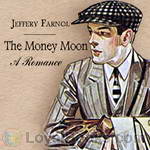 The Money Moon: A Romance
The Money Moon: A Romance
The Money Moon is a light-hearted romance. Jilted in love, our American millionaire hero, George Bellow, takes a walking tour of the Kent countryside to overcome the “Haunting Spectre of the Might Have Been”. Along the way he makes friends with a young boy out to discover a fortune to save his Aunt Anthea from having to sell the family estate and George discovers his ideal “Arcadia” and true love. | |
By: Jennette Lee (1860-1951) | |
|---|---|
 Green Jacket
Green Jacket
An early example of the female private detective, Jennette Lee’s Millicent Newberry made her first appearance in The Green Jacket in 1917 and was also featured in two later books, The Mysterious Office in 1922 and Dead Right in 1925. Miss Newberry brings her own unique perspective to her cases, only accepting those where she has a say in what happens to the guilty party. She is rarely without her knitting, using it as a technique to put clients and suspects alike at ease, while also knitting... | |
By: Jennie Hall (1875-1921) | |
|---|---|
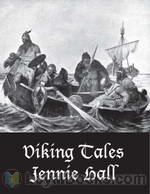 Viking Tales
Viking Tales
Viking tales are tales from Iceland, featuring the king Halfdan and his son Harald. | |
By: Jerome K. Jerome (1859-1927) | |
|---|---|
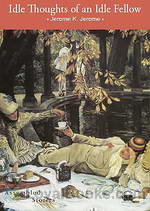 Idle Thoughts of an Idle Fellow
Idle Thoughts of an Idle Fellow
Idle Thoughts of an Idle Fellow, published in 1886, is a collection of humorous essays by Jerome K. Jerome. It was the author’s second published book and helped establish him as a leading English humorist. The book consists of 14 independent articles arranged by themes. | |
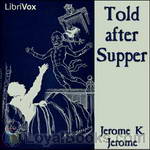 Told after Supper
Told after Supper
It is Christmas Eve, and the narrator, his uncle and sundry other local characters are sitting round the fire drinking copious quantities of whisky punch and telling ghost stories until bedtime, when… But no, I won’t spoil the fun. This is a little gem: Jerome at his tongue-in-cheek best. | |
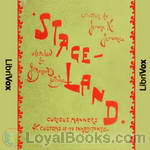 Stage Land
Stage Land
A comic look at the curious habits and customs of the inhabitants of ‘Stage Land’. Dedicated to ‘that highly respectable but unnecessarily retiring individual, of whom we hear so much but see so little, “the earnest student of drama” | |
 They and I
They and I
A man and his three children leave the “Little Mother” at home in the city and set up temporary housekeeping in a country cottage to supervise the remodeling of the house he has just purchased there. The story is narrated by the father. His interactions with his children, interspersed with his own recollections of past events, make for hilarious reading. This is Jerome at his best, IMHO, although this is apparently one of this lesser known novels. | |
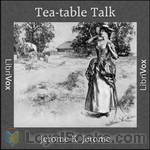 Tea-table Talk
Tea-table Talk
As the New York Times said in 1903, this lesser-known work by Jerome K. Jerome does not display “the wit of Congreve or even the glittering sort Mr. Jerome employs in some of his other books.”It takes the form of imaginary conversations between the writer and a number of un-named characters at the afternoon tea table. The Woman of the World, the Old Maid, the Girton Girl, the Philosopher and the Minor Poet wax lyrical on subjects like marriage, art, society and politics. Frequently they appear to prefer the sound of their own voice to that of others... | |
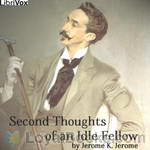 Second Thoughts Of An Idle Fellow
Second Thoughts Of An Idle Fellow
A second volume of humorous essays on various subjects, following the success of Idle thoughts Of An Idle Fellow. | |
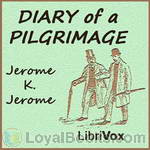 Diary of a Pilgrimage
Diary of a Pilgrimage
A possibly fictionalised account by the comic novelist Jerome K. Jerome of a trip to Germany that he undertook with a friend in order to see the famous Passion Play at Oberammergau. The journey takes in London, Dover, Ostend, Cologne, Munich, Oberau, Oberammergau and then back to London via Heidelberg. As one might expect from the author of 'Three Men in a Boat', much goes wrong along the way, including seasickness, strange food, stranger beds, misleading guidebooks, bewildering train timetables, and numerous cultural and linguistic misunderstandings. | |
By: Jesse Lynch Williams (1871-1929) | |
|---|---|
 Why Marry?
Why Marry?
Why Marry? is a comedy, which "tells the truth about marriage". We find a family in the throes of proving the morality of marriage to a New Age Woman. Can the family defend marriage to this self-supporting girl? Will she be convinced that marriage is the ultimate sacredness of a relationship or will she hold to her perception that marriage is the basis of separating two lovers."Why Marry?" won the first Pulitzer Prize for Drama. | |
By: Jessie Benton Frémont | |
|---|---|
 The Will and the Way Stories
The Will and the Way Stories
Simply put, this is a book of 9 short vignettes each of which describes a different scenario which demonstrates the age old adage: 'where there's a will, there's a way'. | |
By: Jessie Fothergill (1851-1891) | |
|---|---|
 The First Violin
The First Violin
May Wedderburn is a quiet provincial girl, living in small and seemingly boring Skernford. Underneath the dull exterior, there is mystery, suspicion and fear in this little town, surrounding the austere local wealthy landowner who is very interested in marrying poor May. It looks as though she will have to marry him whether she likes it or not until an unsuspected alliance is formed between her and a respected old lady. They both escape to Germany where music and excitement await them. | |
By: Jessie Graham Flower (-1931) | |
|---|---|
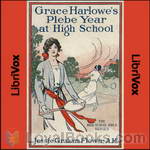 Grace Harlowe's Plebe Year at High School
Grace Harlowe's Plebe Year at High School
This delightful book tells about a group of smart youths who get up to some wonderful adventures together – and save one another from troubles. The unofficial leader of the group is Grace Harlowe, the title character. When Anne Pierson comes to the class at the beginning of the year, they decide to take her under their wing. Anne has a lot of troubles at home, but will true friends make her happy? | |
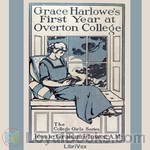 Grace Harlowe's First Year at Overton College
Grace Harlowe's First Year at Overton College
Set after the Grace Harlowe High School series, Grace and her friends Miriam and Anne start a new chapter of their lives as Freshmen at Overton College. After various trials and tribulations they earn the respect of the elder classes and become valued members of the school. (Introduction by BumbleVee) | |
 Grace Harlowe's Sophomore Year at High School
Grace Harlowe's Sophomore Year at High School
Being a good and loyal friend is not easy, and Grace learns it the hard way. But, as in all children's books, good triumphs over evil. | |
 Grace Harlowe's Senior Year at High School; or, The Parting of the Ways
Grace Harlowe's Senior Year at High School; or, The Parting of the Ways
The four series follow Grace Harlowe and her friends through high school, college, abroad during World War I, and on adventures around America. In The High School Girls Series, Grace attends Oakdale High School with friends Anne Pierson, Nora O'Malley, and Jessica Bright. The four promote fair play and virtue while winning over troubled girls like Miriam Nesbit and Eleanor Savell, playing basketball, and founding sorority Phi Sigma Tau. The group becomes friends with boys in their acquaintance: David Nesbit, Tom Gray, Hippy Wingate, and Reddy Brooks, forming "The Eight Originals." | |
 Grace Harlowe's Second Year at Overton College
Grace Harlowe's Second Year at Overton College
The four series follow Grace Harlowe and her friends through high school, college, abroad during World War I, and on adventures around America. In The High School Girls Series, Grace attends Oakdale High School with friends Anne Pierson, Nora O'Malley, and Jessica Bright. The four promote fair play and virtue while winning over troubled girls like Miriam Nesbit and Eleanor Savell, playing basketball, and founding sorority Phi Sigma Tau. The group becomes friends with boys in their acquaintance: David Nesbit, Tom Gray, Hippy Wingate, and Reddy Brooks, forming "The Eight Originals." | |
 Grace Harlowe's Third Year at Overton College
Grace Harlowe's Third Year at Overton College
The four series follow Grace Harlowe and her friends through high school, college, abroad during World War I, and on adventures around America. In The High School Girls Series, Grace attends Oakdale High School with friends Anne Pierson, Nora O'Malley, and Jessica Bright. The four promote fair play and virtue while winning over troubled girls like Miriam Nesbit and Eleanor Savell, playing basketball, and founding sorority Phi Sigma Tau. The group becomes friends with boys in their acquaintance: David Nesbit, Tom Gray, Hippy Wingate, and Reddy Brooks, forming "The Eight Originals." | |
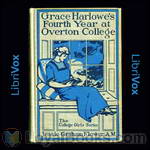 Grace Harlowe's Fourth Year at Overton College
Grace Harlowe's Fourth Year at Overton College
The four series follow Grace Harlowe and her friends through high school, college, abroad during World War I, and on adventures around America. In The High School Girls Series, Grace attends Oakdale High School with friends Anne Pierson, Nora O'Malley, and Jessica Bright. The four promote fair play and virtue while winning over troubled girls like Miriam Nesbit and Eleanor Savell, playing basketball, and founding sorority Phi Sigma Tau. The group becomes friends with boys in their acquaintance: David Nesbit, Tom Gray, Hippy Wingate, and Reddy Brooks, forming "The Eight Originals." (Introduction by Wikipedia) | |
 Grace Harlowe's Golden Summer
Grace Harlowe's Golden Summer
The College Girls Series sees the friends part ways: Grace, Anne, and Miriam depart for Overton College, while Jessica and Nora attend a conservatory. The Eight Originals gather on holidays, but the seven College books focus on the three at Overton, along with new friends like J. Elfreda Briggs. They form Semper Fidelis, a society devoted to aiding less fortunate students at Overton. Following graduation, Grace rebuffs offers of marriage for "what she had firmly believed to be her destined work," managing Harlowe House at Overton. | |
 Grace Harlowe's Return to Overton Campus
Grace Harlowe's Return to Overton Campus
The four series follow Grace Harlowe and her friends through high school, college, abroad during World War I, and on adventures around America. In The High School Girls Series, Grace attends Oakdale High School with friends Anne Pierson, Nora O'Malley, and Jessica Bright. The four promote fair play and virtue while winning over troubled girls like Miriam Nesbit and Eleanor Savell, playing basketball, and founding sorority Phi Sigma Tau. The group becomes friends with boys in their acquaintance: David Nesbit, Tom Gray, Hippy Wingate, and Reddy Brooks, forming "The Eight Originals... | |
 Grace Harlowe's Problem
Grace Harlowe's Problem
The four series follow Grace Harlowe and her friends through high school, college, abroad during World War I, and on adventures around America. The College Girls Series sees the friends part ways: Grace, Anne, and Miriam depart for Overton College, while Jessica and Nora attend a conservatory. The Eight Originals gather on holidays, but the seven College books focus on the three at Overton, along with new friends like J. Elfreda Briggs. They form Semper Fidelis, a society devoted to aiding less fortunate students at Overton. Following graduation, Grace rebuffs offers of marriage for "what she had firmly believed to be her destined work," managing Harlowe House at Overton. | |
By: Jim Kjelgaard (1910-1959) | |
|---|---|
 The Black Fawn
The Black Fawn
Bud Sloan was an orphan who had been 'sold out' of the orphanage to work on a farm once he'd been old enough to labor. The farm where he was to work was owned by an aging farmer and his wife who had raised a large family and were now left alone. One day, after his chores were done, Bud wandered into the woods nearby and with mouth agape, he noticed a newborn jet black fawn all alone and apparently confused in his new surroundings. Bud resolved that day that this baby fawn was just like himself, an orphan, and would be bound to him in spirit... | |
By: Joan Conquest | |
|---|---|
 The Hawk of Egypt
The Hawk of Egypt
A tragic love triangle between a beautiful English girl, an English gentleman, and a half-English, half-Egyptian plays out among the ruins and under the desert stars of 1920s era Egypt. The saga ends, as all love triangles must, in tragedy upon the desert sands. | |
By: Joel Chandler Harris (1848-1908) | |
|---|---|
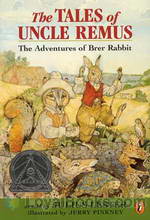 Uncle Remus
Uncle Remus
Bearing a striking resemblance to Aesop of Aesop's Fables fame, American author Joel Chandler Harris' Uncle Remus is also a former slave who loves to tell simple and pithy stories. Uncle Remus or to give it its original title, Uncle Remus: His Songs and His Sayings was published in late 1880 and received instant acclaim. The book was reviewed in hundreds of journals and newspapers across the country, leading to its immense success, both critical and financial. “Remus” was originally a fictional character in a newspaper column... | |
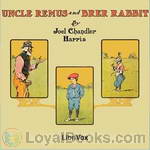 Uncle Remus and Brer Rabbit
Uncle Remus and Brer Rabbit
Uncle Remus' stories feature a trickster hero called Br'er Rabbit ("Brother" Rabbit), who uses his wits to slide out of trouble and gain the advantage over the slower witted other animals, many of whom are trying to eat him. Br'er Rabbit stories were mostly collected directly from the afro-american oral story-telling tradition and are said to be a direct interpretation of Yoruba tales of Hare. This book contains 11 unique stories and was the last one published before the author's death. (Introduction by Phil Chenevert) | |
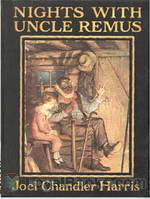 Nights With Uncle Remus
Nights With Uncle Remus
That the little boy loved Uncle Remus and his stories was so obvious that the tale-spinning sessions began drawing additional listeners. Daddy Jack, an old "Africa man" visiting from down-state; Sis Tempy, the strong chief of the mansion's servants; and Tildy, a young and pretty servant-girl - all found their way to Uncle Remus' rude cabin when their duties or interests permitted, to sit around the hearth and hear the wonderful tales of the animals, and foremost among them, Brer Rabbit and Brer Fox... | |
 The Tar Baby and Other Rhymes of Uncle Remus
The Tar Baby and Other Rhymes of Uncle Remus
26 of Uncle Remus's stories put into verse and song. With the exception of the Tar Baby story, they were all new to this publication of 1904 and cover a variety of humorous subjects from Adan and Eve (De Appile Tree) to Brer Rabbit's Gigglin' Place. There are also genuine Camp Meeting Songs and a Corn Shuckin' Song. | |
 Uncle Remus Returns
Uncle Remus Returns
Uncle Remus tells these 11 stories but to the son of the original "little boy" who is visiting his grandmother on the plantation. As always Uncle Remus can be relied upon to provide funny and pointed insight into human personalities through his story telling. These were all published in the Uncle Remus magazine from 1905 and 1906 and gathered together in this book by the author. Note that these stories are reflections of another period in time and some of the language used would definitely be considered rude and/or offensive now. In keeping with the desire to present the text as the author wrote it, nothing has been changed or edited. | |
 Kidnapping of President Lincoln, and Other War Detective Stories
Kidnapping of President Lincoln, and Other War Detective Stories
While detective work always makes for exciting stories, the circumstances under which the detective works play a huge role in the thrill. The stories in this collection follow detectives as they unravel mysteries in times of war, where danger awaits them at every turn. - Summary by Carolin | |
By: Johann David Wyss (1743-1818) | |
|---|---|
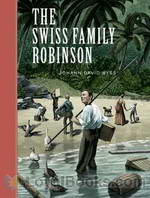 The Swiss Family Robinson
The Swiss Family Robinson
A beautiful story about survival, the Robinson family shows that one does not have to have the usual comforts of life in order to be comfortable and happy. It is also a story about family relations. The book showcases a family of six that has to start all over without the basic amenities that make life easier in the eyes of society. The idea of being in an island with no human neighbors is daunting to say the least. The family was shipwrecked and everyone else on the ship perished when they deserted the ship... | |
By: Johann Wolfgang von Goethe (1749-1832) | |
|---|---|
 The Sorrows of Young Werther
The Sorrows of Young Werther
The Sorrows of Young Werther (German, Die Leiden des jungen Werther, originally published as Die Leiden des jungen Werthers) is an epistolary and loosely autobiographical novel by Johann Wolfgang von Goethe, first published in 1774. The story follows the life and sorrows of Werther after he falls desperately in love with a young woman who is married to another. A climactic scene prominently features Goethe's own German translation of a portion of James Macpherson's Ossian cycle of poems, which had originally been presented as translations of ancient works, and was later found to have been written by Macpherson. (Introduction by Wikipedia and Barry Eads) | |
 Elective Affinities
Elective Affinities
Elective Affinities was Goethe's third novel. It depicts human relationships in a Romantic crucible, and is the sourcebook and inspiration for many literary and filmic adaptations and variations. - Summary by Nicole Lee | |
By: Johanna Spyri (1827-1901) | |
|---|---|
 Heidi
Heidi
Filled with descriptions of the magnificent Swiss Alps, the lives of the simple country folk who live in their picturesque peaks and valleys and the gentle and innocent days of childhood, Heidi by Johanna Spyri is a book that no child should miss reading. Since it first came out, it has captured the hearts of children (and adults) all over the world, been extensively filmed, televised and staged and translated from the original German into more than 60 languages. Heidiland, a theme park, is one of the big attractions in Zurich... | |
 Heidi (version 2 dramatic reading)
Heidi (version 2 dramatic reading)
"Heidi" takes us on a journey to the eventful childhood of a good-hearted girl from the Swiss Alps. A warm and loving story, full of touching moments, it reaches children and adults alike. It was written in 1880 and published in two parts: 1. Heidi's years of learning and travel. 2. Heidi makes use of what she has learned. This English translation from 1915 has "an especial flavor, that very quality of delight in mountain scenes, in mountain people and in child life generally, which is one of the chief merits of the German original... | |
 Maezli
Maezli
"Mäzli" may be pronounced the most natural and one of the most entertaining of Madame Spyri's creations. The atmosphere is created by an old Swiss castle and by the romantic associations of the noble family who lived there. Plot interest is supplied in abundance by the children of the Bergmann family with varying characters and interests. A more charming group of young people and a more wise and affectionate mother would be hard to find. Every figure is individual and true to life, with his or her special virtues and foibles, so that any grown person who picks up the volume will find it a world in miniature and will watch eagerly for the special characteristics of each child to reappear... | |
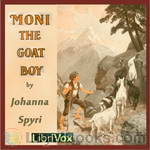 Moni the Goat-Boy
Moni the Goat-Boy
Moni is the goat boy who takes care of all the goats belonging to the people of Fideris, Switzerland. He loves to sing, yodel, and whistle while he romps with the goats all day long on the mountains. His favorite is a young kid named Mäggerli. One day Moni comes across a serious situation where he must keep a deceitful secret in order to protect Mäggerli from being killed. Will Moni risk the life of Mäggerli and tell the truth? This delightful short story teaches children that to trust God and do right is always better than being deceitful. | |
 What Sami Sings With The Birds
What Sami Sings With The Birds
Old Mary Ann has done her best to bring up her son on her own. Like other relatives, her son has a longing to travel off over the mountains. Mary Ann goes with him. Later on her son marries, but loses his wife after she gives birth to their son. Mary Ann assumes responsibility of her grandson, while her son moves away in the agony of his grief. This is the story of what happens to her grandson and where his Grandmother, the songs of the birds, and his faith leads him. | |
 Rose Child
Rose Child
The story of a little girl in the village of Wildbach, who loved the roses, and how spreading both her roses and her love touched the hearts of the villagers. | |
By: John A. Joyce | |
|---|---|
 Shakspere: Personal Recollections
Shakspere: Personal Recollections
Recording of Shakspere: Personal Recollections, by John A. Joyce.A fictitious account of a "friend" of William Shakespeare, who accompanies him from his birth to his death and beyond, chronicling Shakespeare's life, adventures, speeches, and impromptu bursts of poetry. | |
By: John Ackworth (1854-1917) | |
|---|---|
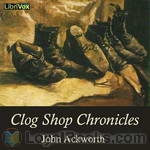 Clog Shop Chronicles
Clog Shop Chronicles
John Ackworth was the pen name of the Rev. Frederick R. Smith, a Methodist minister who was born in Snaith, Yorkshire, but spent much of his career as a circuit preacher in Lancashire. Clog Shop Chronicles was the first and most successful of his works. Set in the fictional 19th-century village of Beckside (said to be somewhere between Manchester and Bolton), the book consists of 12 tales of everyday life in a close-knit Methodist community, which continue into Beckside Lights (1897) and Doxy Dent (1899)... | |